In this (and the next two) blogs in this
series, I will mention and discuss very briefly a few opinions and suggestions on
the subject of photography (particularly, but not limited to, of fauna, flora and
the environment). I revisit these musings regularly to remind myself repeatedly
that I need to keep on honing my craft. The points I raise in this blog deal
with my readiness and attitude as a photographer.
1. Are YOU in the picture?
Photography is just as much about knowing
yourself as it is about knowing the technicalities of the photographic process
and knowing your subject. An exciting image will reflect your ideas, your passions,
and your interaction with and response to the subject matter.
The process of capturing an image starts with a
personal observation and is followed by a deliberate selection of what must be
included and what must be excluded from the frame to ‘create’ the final composition.
The final, chosen image is selected deliberately from among the infinite number
of other possible compositions that confront you. As the photographer, you
decide exactly which smidgen of the reality that you are looking at to include
in the photograph – all else, the rest of reality, is excluded from the frame.
As a consequence of your decisions, you yourself become a vital ingredient in any
photograph that you capture.
You will communicate much about yourself to
your audience. What is it that attracted
you to that particular selected image? How do you feel about the subject you
are photographing? What interpretation(s) are you giving to your observation?
You can simply state, “This is exhibit A”.
But you could also state, “This is
exhibit A and ... because ... since ... So,
viewer, take a second, closer and longer look!” All great images force the
viewer to do the latter, and all lasting images give us hints about the
photographer's state of mind. Thus the photographer's observation, interpretation
and intention are transmitted to the audience via the image.
Always remember that the audience you wish to
entice to spend some time looking at your photographs is intelligent and
visually literate to a high degree. This is the audience you want to attract,
the individuals with whom you wish to communicate. These are the people who
will give you the necessary feedback about your success and standing as a
photographer. More importantly, they will show you how you can develop and refine
your craft further still.
2. Ah, there you are!
All images with impact have been previsualised
to a greater or lesser degree. A good photographer understands her intentions
and is searching her surroundings constantly for the next final selection that
will be captured as a photograph. Such previsualisation (which requires much
imagination and thought) is a bit easier to engage in with a static subject or
one that can be manipulated and controlled in the studio or even outdoors, a subject
that does not vanish in an instant. However, even in environmental photography,
which relies very heavily on chance and split-second decision-taking, the good photographer
knows beforehand what she is seeking. “This
is the image that would satisfy my need to express myself about this subject.
How do I go about finding and capturing it?” “This is what I need to say. What
composition will convey this message best?” Even if previsualisation is as
brief as “How can I best use this
splendid light?” or “Where can I go from
here to get the best shot?”, visual preparation is vital. You need to ‘see’
the image in your imagination before you attempt to capture it.
Effective previsualisation requires planning.
Merely travelling around, seeing what you can snap up is challenging and fun,
but without previsualisation this process will always remain one of
documentation only. Before you travel to any destination in search of
photographs (even your own backyard) or, failing that, while you are already on
the way, ask yourself a few questions to kick-start the process of
previsualisation.
If you are travelling to a known destination,
plan carefully. “What am I likely to encounter
and where? What is it that I am hoping to find? What could happen? What could I
see? How will I be affected by my travel experience?” On the other hand, if
the destination is new to you, questions should likely be “Why am I going there? What can I expect? What will happen if...?”
Previsualisation also means knowing your
subject well, be it a person, an inanimate object, a place, a landscape, or a particular
species that you are after, for example. Your subject may solely be the light
or it may be a process that you wish to capture and share in an image. What do you want to express? What intrigues
you? What is your opinion on the matter? What is it about this subject that
took your breath away initially?
There are dangers involved with
previsualisation. Never become too rigid in your response to a situation
because of your previsualisation. Never miss those images that simply PING!
unexpectedly. Never despair because the weather or the light are not what you
had hoped for, or because your favourite species has not appeared. Use the
prevailing conditions and start previsualising anew. Effective previsualisation
is an unceasing and fluid activity. Always leave room for those most magical of
ingredients, spontaneity and serendipity.
3. Oops! Are you here too?
By choice, I call myself an environmental
photographer. My subject matter includes the fauna and flora, as well as the patterns
and processes of the environment in which they are embedded. This third point
of the blog applies particularly to photographers with a similar interest.
However, with a little thought and application, the point can be applied to
almost all photographic subjects or genres.
There is a glut of wildlife and landscape
photography in the media and on the market. Some of it is excellent; some of it
is valuable as natural history documentation. Sadly, the overwhelming majority
of images on display (particularly on social media) simply do not qualify as
good photographs because they do not engage the viewer actively; they
communicate very little – other than the obvious identification of a particular
subject.
This mind-numbing bombardment of pictures can
become overwhelming and discouraging (if not infuriating) for many reasons. For
me there are two important challenges that confront photographers that are at
the start of their photographic journey (particularly so young photographers).
Faced with this stream of snaps, you need to remind yourself that only a small
subset of people who use a camera (in the broadest sense of any available
image-capturing device) actually comprises photographers. Always go out of your
way to illicit feedback (positive and negative) from the photographers you
admire the most. Judging your ‘success’ (or otherwise) by the number of ‘likes’
that your images attract on social media platforms is misguided at best.
Chasing hollow praise can become debilitating and can become ruinous to the
development and enhancement of any real talent. It is never the number of
likes, comments, friends or followers (on social media particularly) that will
indicate in any meaningful and helpful way your competence and growth as a
photographer – these indicators will simply tell you how popular you are.
Rather, it is a matter of WHO has given you a positive comment, encouragement
or constructive criticism. The honest opinion of a good photographer outweighs
all else.
Also, remember that the public (which may or
may not include competent photographers) will be wowed for all time by depictions
of certain ‘subjects’, irrespective of the photographic merit of the pictures.
Cats, dogs, kids, breakfast meals, even cups of coffee come to mind
immediately. Amongst wildlife ‘photographers’ it tends to be the large
predators. (In South Africa, it is leopards – nowadays they have also been
given names. I wonder what the leopards call photographers? I have a few choice
suggestions that I shall keep to myself!)
As a serious photographer, do not overlook the
obvious. Much that needs to be expressed about the environment and its
inhabitants rests with the little guys. There exists an endless variety that is
important and must be spoken about. (Yes, I do know that the little guys do not
sell well, but so what!)
Include processes in your visual repertoire. It
is obvious that showing action or depicting an ecological relationship between
individuals may hold more interest for the viewer. However, consider too the
effect of abiotic processes on the fauna, flora and environment – rain, wind,
wave action, the effect of changing light conditions, for example. Again, the
variety (and the delight at seeing and communicating something new) is endless.
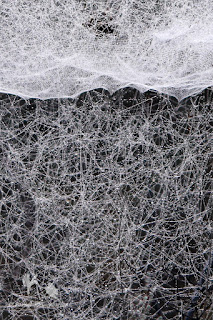

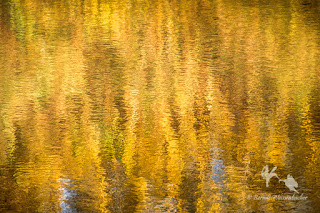
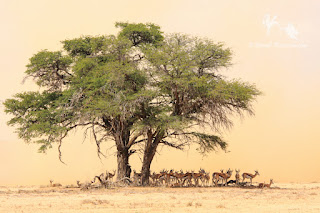

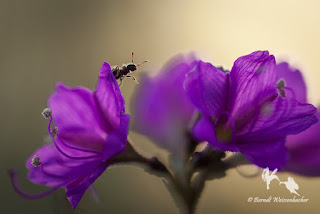
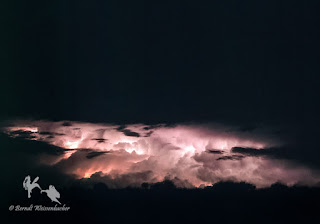
No comments:
Post a Comment